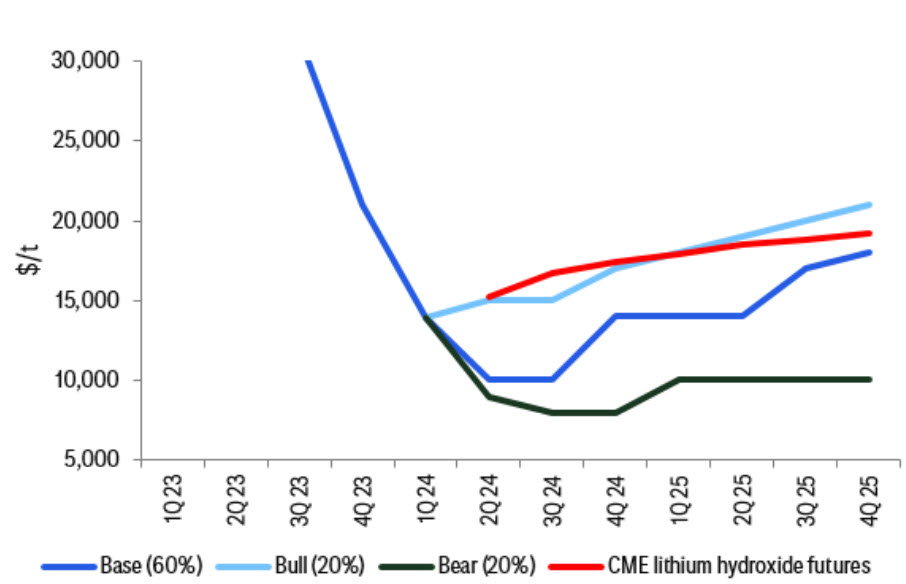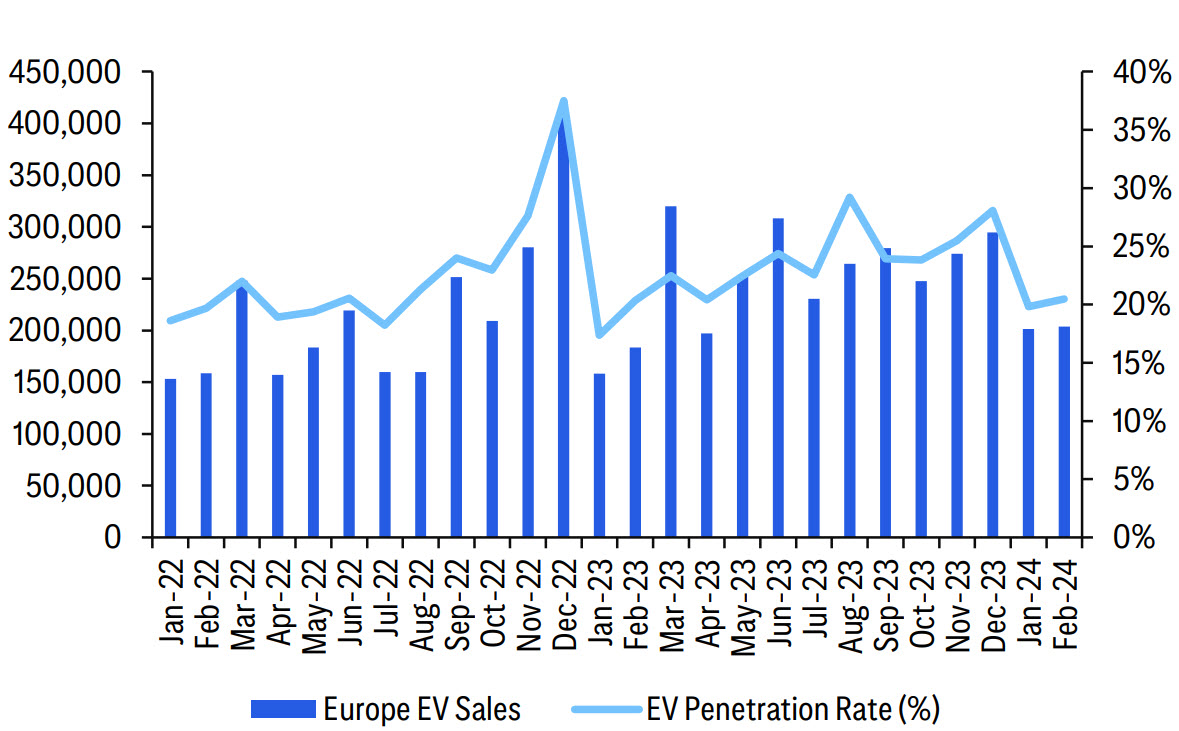Lithium rally is “detached from fundamentals” - go short says Citi
I have a vibrant community of investors following me on X/Twitter, and given I publish daily lithium prices, a good portion of them are what I would call ardent lithium bulls. This subset of my followers is certainly the most vocal, especially when I publish anything even slightly contradictory to the lithium bull case.
No doubt, the headline above has dragged a few of them here, and I want to say this upfront: Don’t shoot the messenger!
I do make it a point of reporting on anything lithium-related that comes across my desk from the major brokers, but I don’t pick and choose—I chronicle every view I get. The views are of the brokers and aren’t necessarily mine (you all know I’m a trend follower—go look at a chart for my view!).
So far, in the research reports I’ve encountered, brokers have provided an opinion along the lines of “We’re moderately bullish or bearish”, but few have gone as far as Citi has done in their latest Metal Matters research report released Wednesday afternoon.
Let me give you the lowdown on their latest take on the current state of the lithium market, and how investors and producers should trade it. (Hint: Lithium bulls get ready to unleash your rage! 😡)
Get shorty
Citi recommends investors and producers short the August 2024 lithium hydroxide futures contract traded on the CME. They believe the price could decline from US$16,700/t (the last traded price of the contract at the time of writing is $16,650/t) to US$10,000/t – a substantial fall of 40%.
Citi’s suggested their “stop out” price is US$20,000/t. This means they would close the trade if the relevant futures contract trades at or above this price.

The above chart shows Citi’s lithium hydroxide price forecasts out to the end of 2025. US$10,000 is their base case scenario for the second quarter of 2024, hence their suggested trade price target.
Looking further out, Citi is clearly far less bearish on lithium hydroxide, expecting it to rise to around US$14,000 by the end of the year (this happens to be the current spot price). By the end of 2025, however, lithium hydroxide could be trading nicely higher, at around US$18,000/t.
Detached from fundamentals
There are two main reasons why Citi has suggested getting short lithium hydroxide:
1. Contango is overdone
Contango occurs in the futures market where futures contracts are trading at a higher price than the spot price. The spot price is what buyers and sellers are transacting at right now.
Contango can occur for two main reasons. The first is higher futures prices simply reflect the cost of carry of the asset. For a commodity like lithium hydroxide, this is typically storage and transport to market. It may also represent the time value of money between today and the contract expiration date.
Secondly, contango may represent an expectation among market participants that prices are to rise in the future. Generally, if you know the value of reason one, you can roughly work out the magnitude of this second reason.
Citi suggests that the 18% premium the August contract is trading at compared to the current spot price is too big. On an annualised basis, at 50%, it presents traders with a juicy opportunity should Citi’s hunch that the prevailing fundamentals for lithium minerals have run ahead of reality.
2. Softer demand, unrelenting supply
This brings us to Citi’s second reason for shorting lithium hydroxide. They believe there's a “fundamental downside” for lithium minerals due to competing bearish factors across both the demand and supply sides of the market.
On the demand side, Citi notes the EV outlook in countries outside of China is “softening”. This is causing EV manufacturers and component makers to delay purchases of lithium minerals, and for many automakers that sell both internal combustion engine (ICE) vehicles and EVs, to favour selling more ICEs to maintain profitability.

Citi notes that even in China, where EV sales have remained robust, retailers are looking to sell more hybrid models instead of fully-EV versions. It all ends up in “lower lithium unit consumption”, notes Citi.
Citi also believes the much-anticipated restocking rally, which was expected to occur after the Chinese New Year holiday break, has run its course. Citi notes, “Downstream participants appear to be resisting higher prices, with most having restocked in the past few weeks.” If anything, Citi proposes that inventories of both raw (spodumene) and processed lithium minerals “remain high across the supply chain.”
On the supply side, Citi expects the recent price rise is going to ultimately delay a still-needed rebalancing of the market. According to the broker, “The price uplift is likely to temper supply cuts, keeping the market well supplied with lithium…Lower prices are needed to clear the market, and pricing of $10k/t in the next six months would hit miners and converters hard enough to ultimately push the market back into balance.” (emphasis added)
The final, and swing factor impacting the supply side – as it has been since the 2022 peak – is Chinese lepidolite production. Citi notes that “supply has resumed quickly post the Chinese New Year”, and fears that environmental inspections would curb production have “fizzled out”.
More broadly speaking, Citi says that ex-China miners “continue pushing higher volumes”, as many projects continue “ramping up output and adding incremental supply”. In conclusion, the broker proposes “price gains have become detached from fundamentals”.
What are the upside risks?
Citi notes the following risks to their short lithium trade recommendation:
- A stronger-than-expected EV sales outlook
- Supply underperforming the broker’s expectations
- A sustained battery restocking cycle
- An improved macroeconomic outlook due to lower interest rates
Lithium hydroxide could tip Citi’s bull case scenario and “trade above US$20,000/t in the next 3-6 months” on an “improved battery production pipeline”, if China’s first quarter EV sales come in better than expected, and if global manufacturing sentiment improves. The combination of these three factors seems unlikely, though, notes Citi.
This article first appeared on Market Index on Thursday 18 April 2024.
5 topics
10 stocks mentioned

